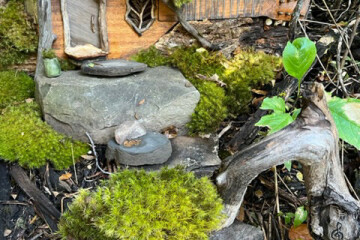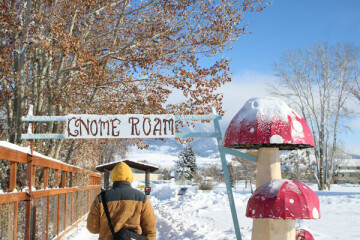Bumblewood Thicket 2024
There is a theory, rooted in ancient folklore, that a veil exists between a world of magic and our earthly realm. Every day, unbeknownst to us, amidst the hustle and bustle of everyday life, mythical creatures flitter and flutter about, making mischief, merriment and magic. Some people also believe that at certain special times, or under unique circumstances, the veil is lifted and we are able to catch a glimpse of the enchantment. To enter the fairy village known as Bumblewood Thicket, tightly nestled into the brambles and rambles at Glen Lake Rotary Park on Bozeman’s north end, is to experience this phenomena first hand. Each year, for just a short time, the veil between worlds is pulled back and these trails are alive with life – fairy life. Every corner of the forest is rife with magic and wonder, and unexpected surprises behind each twist and turn.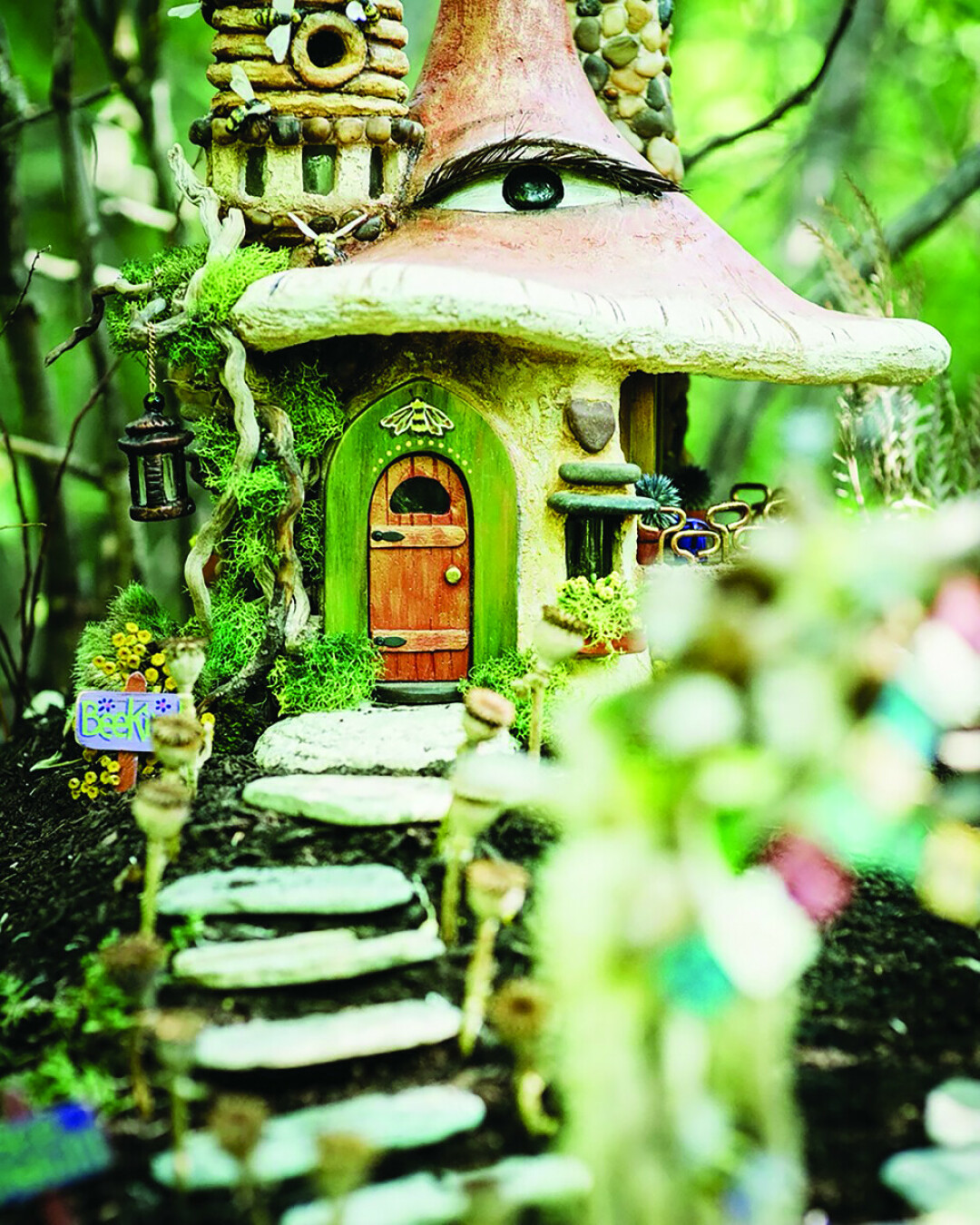
In its fifth year, Bumblewood Thicket Fairy Village is the handiwork of a team of artists and makers who come together with the support of Random Acts of Silliness. The goal of Random Acts, a nonprofit, is to spark creativity and build community throughout the Gallatin Valley with unique art installations, original theater and, well, random acts of silliness. Bumblewood Thicket is their signature event and attracts nearly 20,000 visitors during its three-week run.
The first fairy village came together during the COVID pandemic. Like most of us, Danielle Thomsen, Random Acts co-founder and Executive Enchantment Director, was at home in isolation, looking for ways to stay creative and keep her kids busy. She and several neighborhood families came up with the idea to build an impromptu fairy village in a small offshoot of Graff Park that they affectionately call ‘the Fairy Trail.’ If you have ever walked this section of the Sourdough Trail, you’ll know exactly where it is. There were no applications, no guidelines, no artist stipends. They didn’t ask anyone’s permission. They simply built their fairy houses and spread the word throughout the neighborhood. This fairy village was unveiled to great delight.
“Two or three times a day,” remembers Thomsen, “we’d go check to see what people added, and we’d be stopped on the trail by someone who had seen the village and was excited to tell us about it. That’s when I got the idea to do it on a larger scale.”
One of the first people Thomsen reached out to was Anna Visscher, now Chief Shenanigans Officer at Random Acts, who created the “Flights of Fancy Flight School” for the first official village. “Because it was during COVID,” Visscher says, “we found ourselves in a unique situation. Art shows had screeched to a halt, galleries were closed, and many artists were out of work. People were game to try anything.” Thomsen agrees; “One of the silver linings of COVID was that people were open to trying new things. Everyone recognized the need for something to make people feel better. Ordinary rules just didn’t apply.” With enthusiastic support from the Gallatin Valley Land Trust (GVLT), the first official Fairy Village, Flutterby Thicket, opened to the public in September of 2020.
Both Thomsen, Visscher, and the other fairy architects were astonished by the public’s reaction to their creation. They would check the space every day to ensure that everything was in order and that the fairy houses were not being disturbed. Oftentimes, they would be approached by random visitors, some misty-eyed, others openly weeping, overwhelmed with gratitude for what had been created.
Everyone, it seemed, had been looking for an outlet — something safe, imaginative, and positive, that allowed a small distraction from everything that was getting thrown at them.
“Everyone felt so powerless at that point, so the idea we could do something to make a difference for people was really profound,” says Visscher. From that point on, the Fairy Village became a permanent feature in Bozeman’s artistic landscape.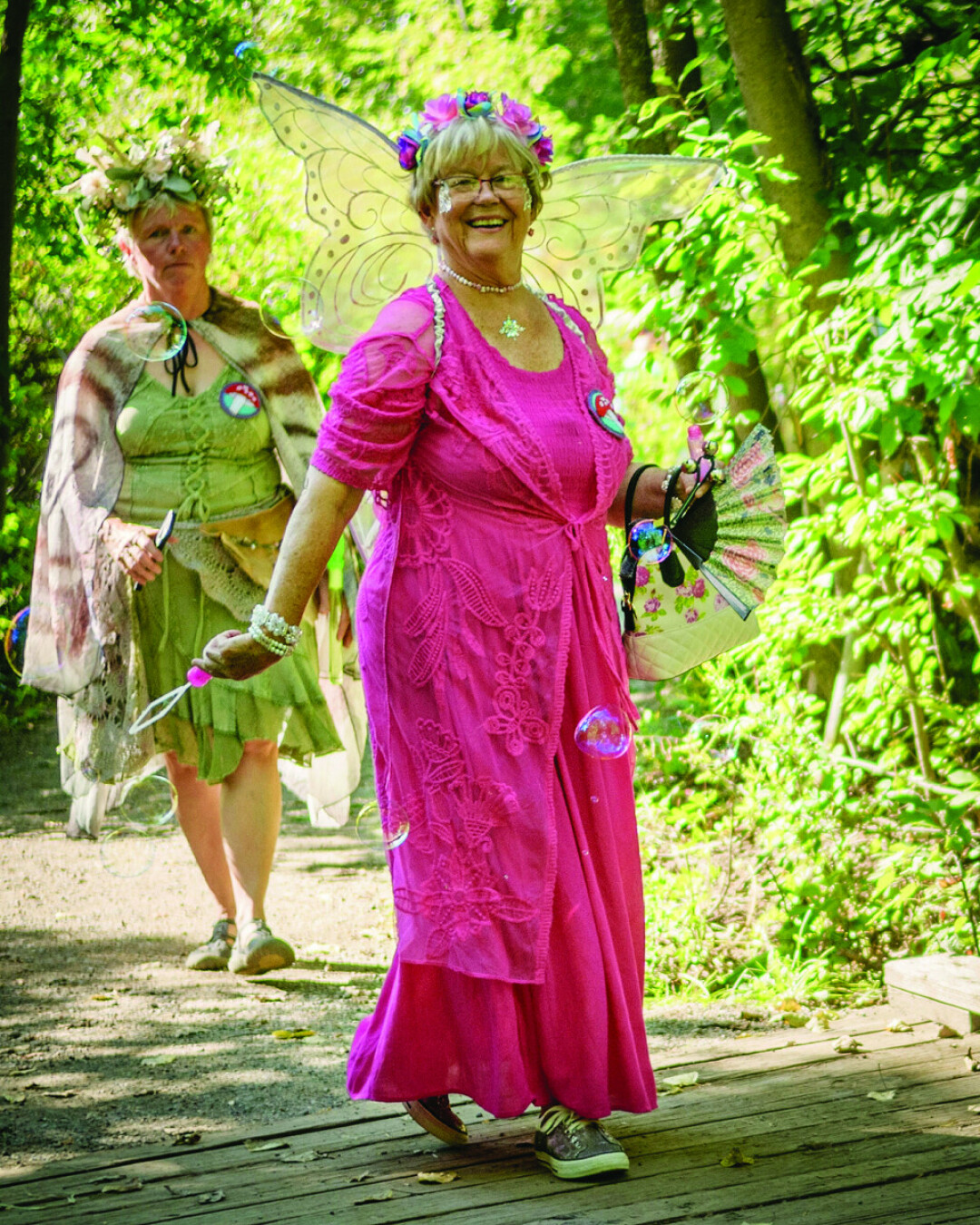
While some may see a fairy village as all sparkles and fairy dust, Thomsen and Visscher share a clear vision and a strong sense of purpose. For the artists as well, this is serious business. To be an official ‘fairy architect,’ one must go through a rigorous application process and provide detailed plans and a backstory for their structures, as well as examples of previous works. Once selected, fairy architects work closely with the Random Acts team in a collaborative process to build and install their fairy businesses and homes. The depth of the narrative behind Bumblewood Thicket, added to over the years by Thomsen and Visscher, might surprise some.
For instance, clear guidelines determine how big houses can be (based on a uniform fairy height, of course), what they can contain, and what they can or can’t be made from. Local and naturally sourced materials are encouraged, to make it look as if the fairy village really did rise out of the mist. It’s all about maintaining the mystery. “What we really want is for all of the houses to look like they were made with things found by the fairies in that section of the woods,” says Visscher, “like how an actual fairy house in the woods would look. But we also have accepted that there will be variation in style and that is part of the magic in this recipe.”
After five years, Thomsen and Visscher have learned what works and what doesn’t work, and the results reflect this. The fairy houses of Bumblewood Thicket are more than simply craft store-inspired little kid fantasies. These are true works of art. Each year, the artists and makers chosen to be fairy architects come up with more intricate creations and elaborate narratives, and the level of craftsmanship continues to rise. “The most difficult thing,” says Kenda Minter, local artist and two-time fairy architect, “is meeting my own expectations. I want to make something enjoyable but I also love to challenge people. I want people to think ‘how did they do that?’ The hardest part is figuring out how to get people to ask that question.” Visitors to the Village include all ages, genders, and walks of life, many of whom come not for the twinkling lights and fairy-feels, but to appreciate the craftsmanship of thoughtful, intricate, and radical architectural art in miniature form.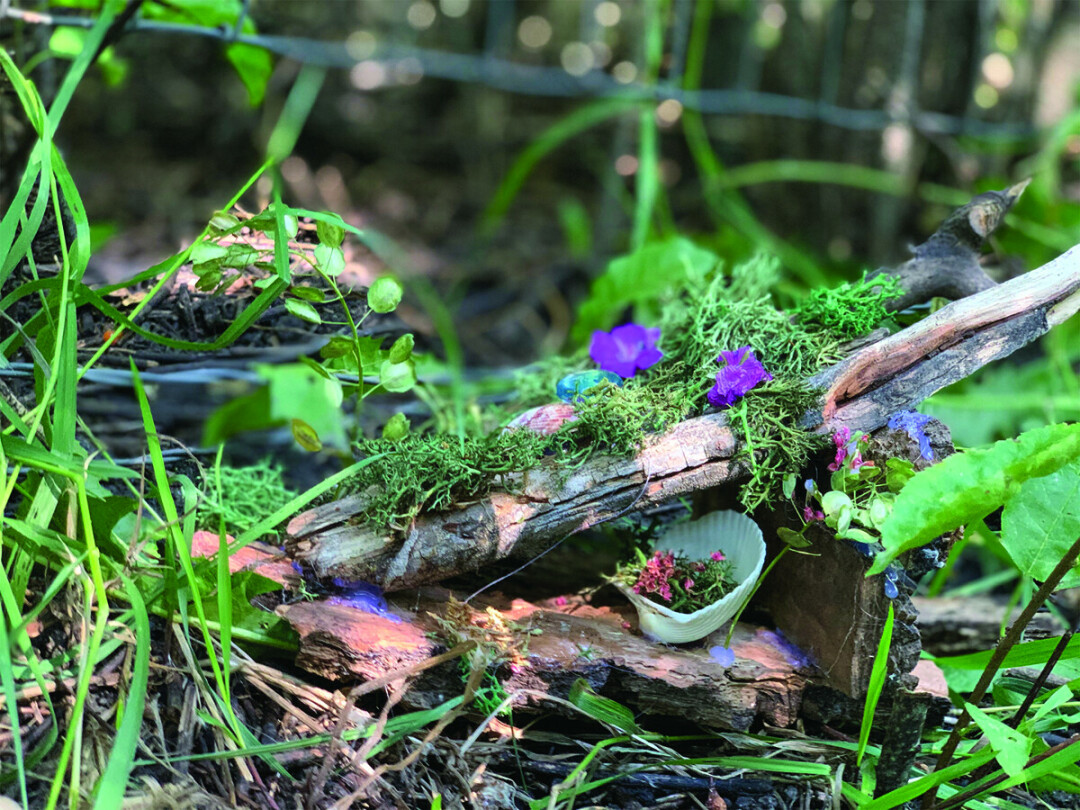
One of the other things about being a fairy architect that is unusual to Random Acts is the fact that artists are paid for their creations. Funding for visual arts is tough to come by these days, and artists are often forced to choose between projects that excite them, that allow them to explore and expand their creativity, and those that pay the bills. Since day one, the team at Random Acts has held firm in the belief that artists deserve financial and promotional compensation for their work. Marla Goodman has been involved in nearly every Random Acts installation since the beginning. “The support and infrastructure RAS provides,” she shared recently, “has a huge value to artists, and the monetary compensation they offer makes it possible for artists to prioritize outreach work. It allows them to carve out time to create wonderful experiences that feed the heart of our community.”
Community is at the heart of everything this nonprofit does. Random Acts of Silliness stands out among arts organizations in Montana because of its commitment to equal access. All of their work is available to the public, in accessible public spaces, free of charge. This is what compelled Jamie Saitta, Recreation Manager of the City of Bozeman Parks and Recreation Department, to get on board as a program partner. “They are wildly creative and passionate about creating equal access to the arts and offer experiences to people who may not otherwise have them, free of charge,” says Saitta, “It’s truly remarkable to watch them work their magic — activating public spaces in a completely new way. It has a tremendous impact on individual lives and our community.”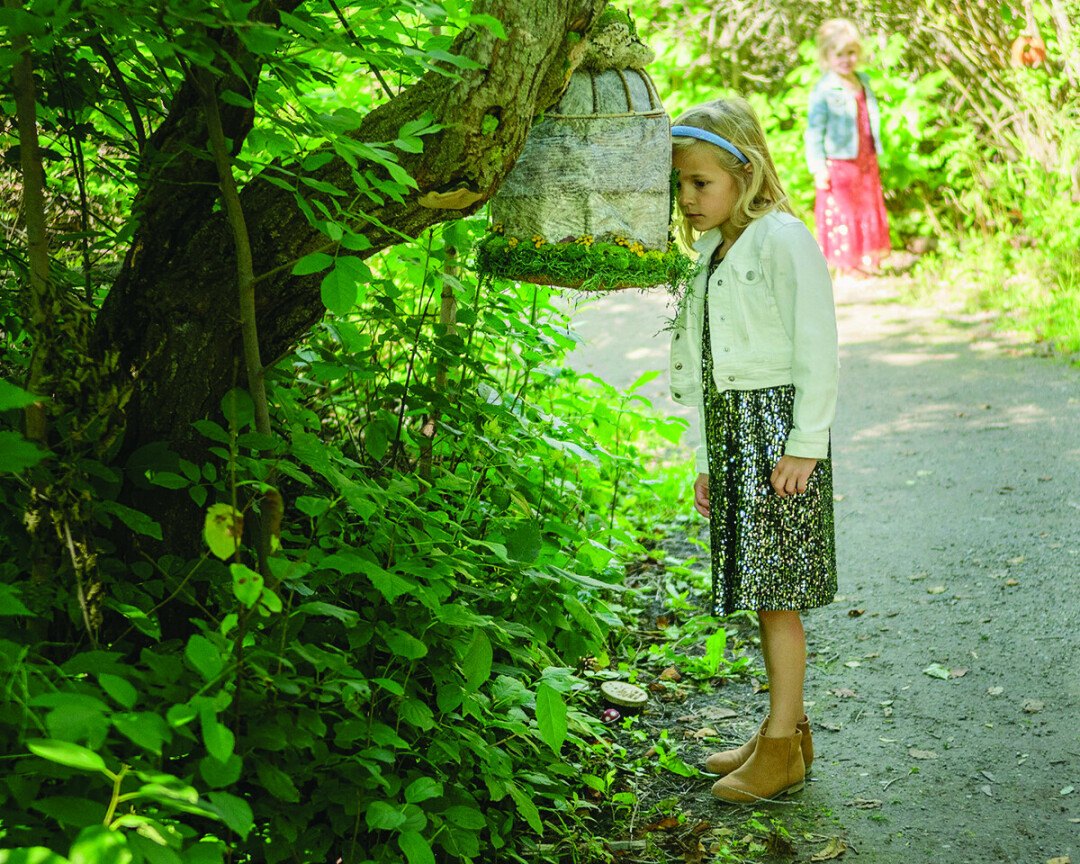
Shasta Winston has visited the Fairy Village with her family every year since the very first. “It’s magic,” she declares. “Every single year it is magic, but magic in completely different ways.” Because the materials and the place are both so familiar, her family experiences the art differently than they would if it were in a gallery or behind a paywall. It encourages them to think differently about their environment. After all, if the trail they take every day can, overnight, become a fairy village, and the trees and flowers they see on a regular basis become fodder for fairy life, what else can happen?
“The real magic,” says Visscher, “is in the gift the artists give to the community with their creations, and in watching visitors experience it. It has gone beyond my wildest expectations.”
The 5th annual Bumblewood Thicket Fairy Village at Glen Lake Rotary Park runs from August 30 to September 22, 2024. This year’s village will also offer a free “Fairy Grove” theater experience on Saturday nights, and a Build Your Own Bonanza for those who want to craft their own fairy houses. For more information on visiting the Fairy Village or any other of Random Acts of Silliness’ upcoming programs, please visit www.randomactsofsilliness.com.
Laura Prindiville is a writer living and working in Bozeman, Montana. She is a firm believer in fairies.
